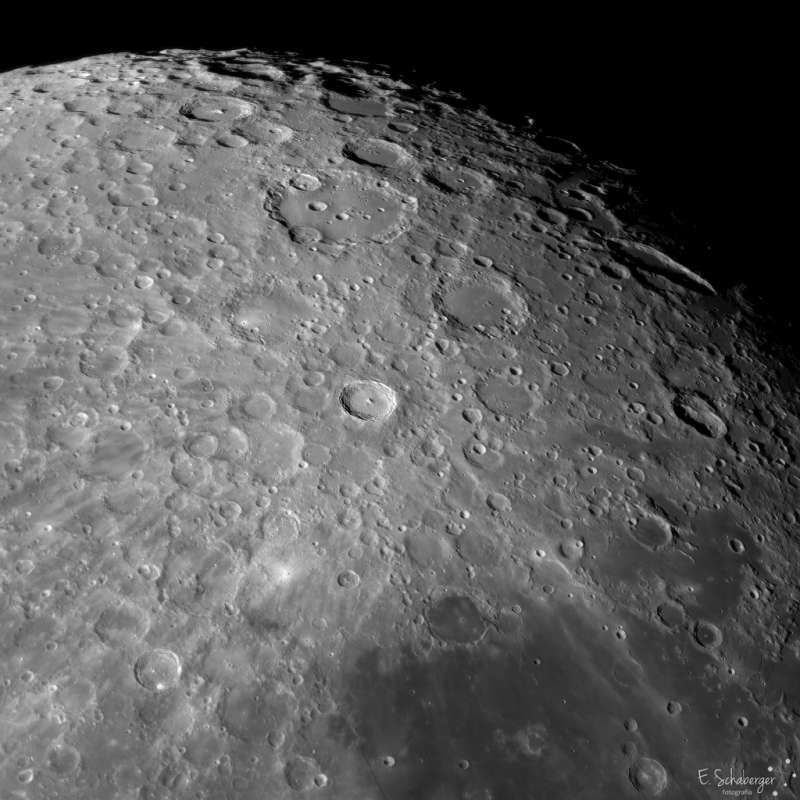Credit & Copyright: Eduardo Schaberger Poupeau
Explanation:
South is up
in this detailed telescopic view across the Moon's rugged
southern highlands.
Captured on July 20, the lunar landscape features the Moon's young and old,
the large craters Tycho and Clavius.
About 100 million years young,
Tycho is
the sharp-walled 85 kilometer
diameter crater near center, its 2 kilometer tall central peak
in bright sunlight and
dark shadow.
Debris ejected during the impact that created Tycho still make it the
stand
out
lunar crater when the
Moon is near full, producing
a highly visible radiating system of light streaks,
bright rays that extend across much of the lunar near side.
In fact, some of the material collected at the Apollo 17 landing site,
about 2,000 kilometers away, likely originated
from
the Tycho impact.
One of the oldest and largest craters on the Moon's near side,
225 kilometer diameter
Clavius is due
south
(above) of Tycho.
Clavius crater's
own ray system resulting from its original impact event
would have faded long ago.
The old crater's worn walls and smooth floor are now overlayed by
smaller craters from impacts that occurred after Clavius was
formed.
Observations by the Stratospheric Observatory for Infrared Astronomy
(SOFIA) published in 2020 found
water
at Clavius.
Of course both young Tycho and old Clavius craters
are lunar locations in the science fiction epic
2001: A Space
Odyssey.
1999 2000 2001 2002 2003 2004 2005 2006 2007 2008 2009 2010 2011 2012 2013 2014 2015 2016 2017 2018 2019 2020 2021 2022 2023 2024 2025 |
Январь Февраль Март Апрель Май Июнь Июль Август Сентябрь Октябрь Ноябрь Декабрь |
NASA Web Site Statements, Warnings, and Disclaimers
NASA Official: Jay Norris. Specific rights apply.
A service of: LHEA at NASA / GSFC
& Michigan Tech. U.
|
Публикации с ключевыми словами:
Moon - crater - Луна - кратер
Публикации со словами: Moon - crater - Луна - кратер | |
См. также:
Все публикации на ту же тему >> | |
